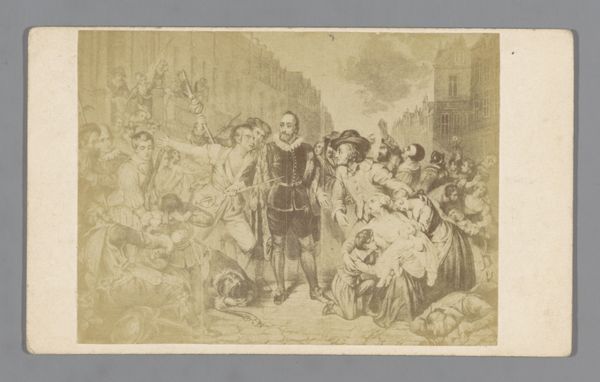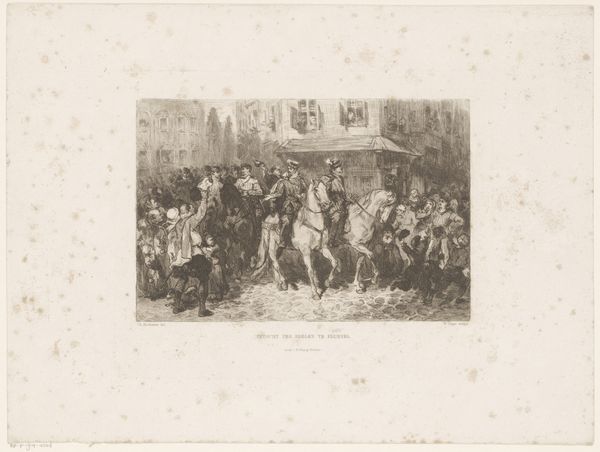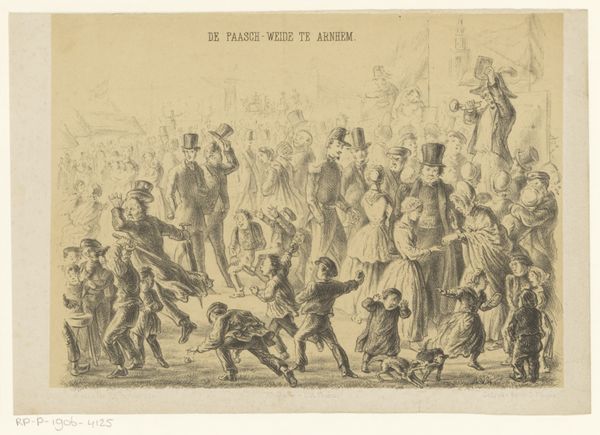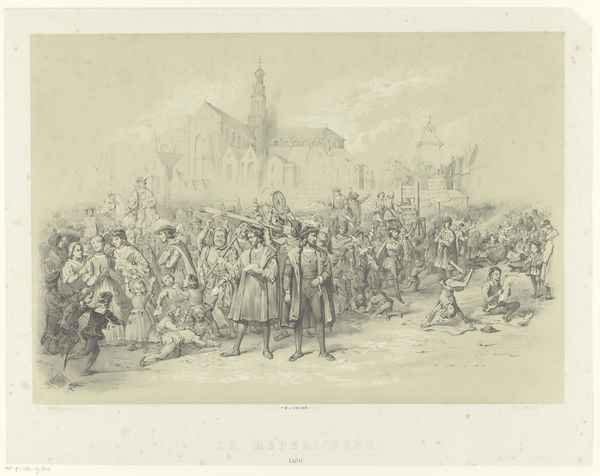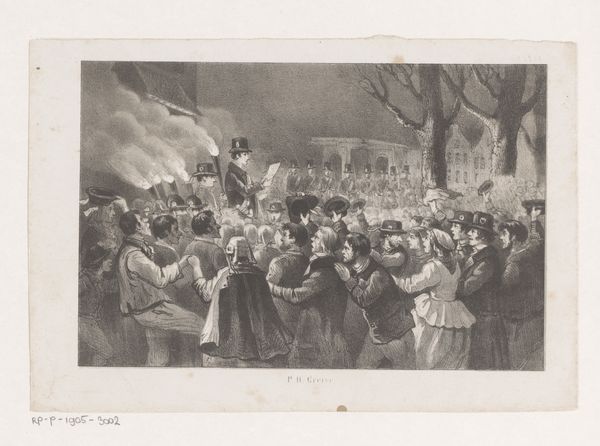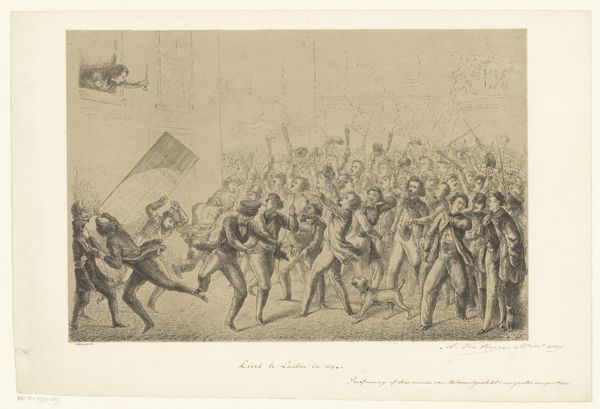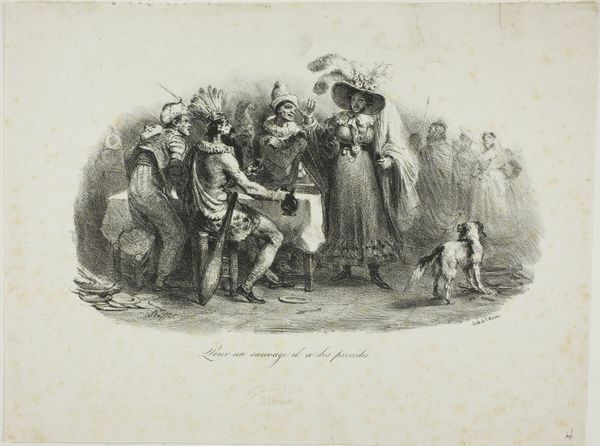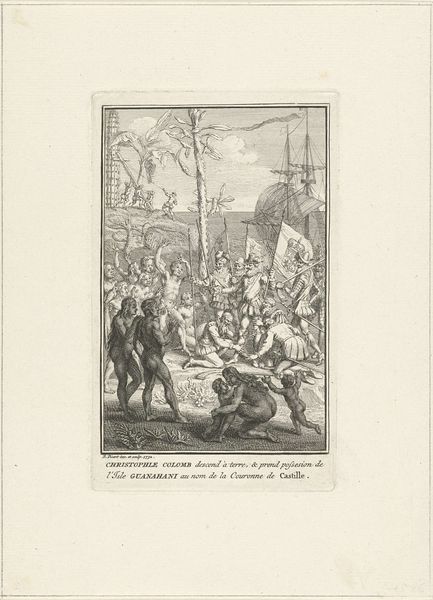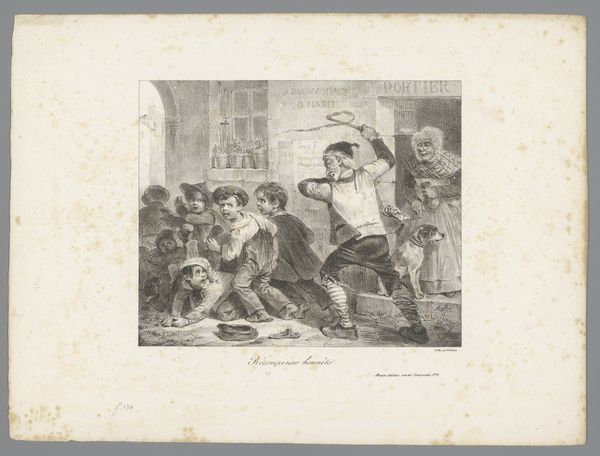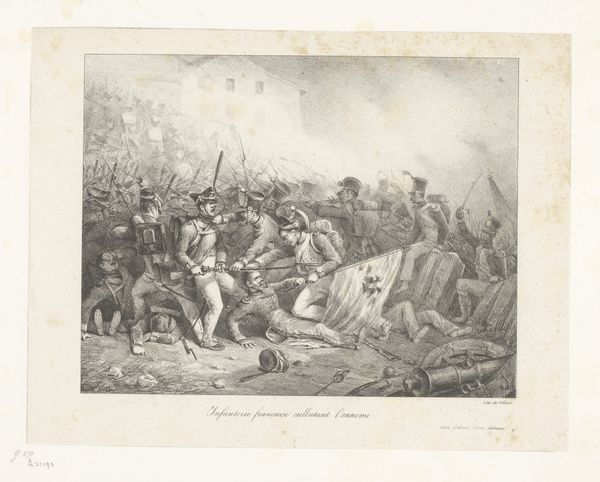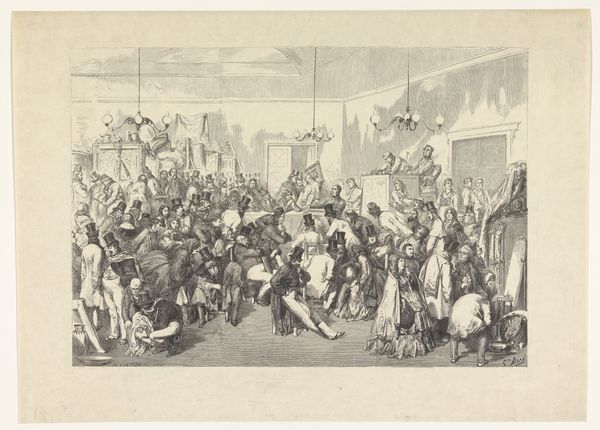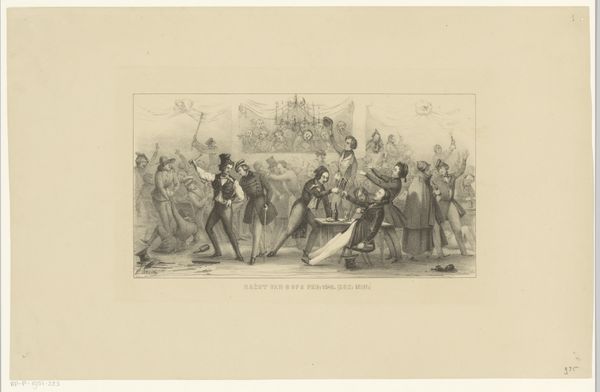
photography, gelatin-silver-print
#
portrait
#
narrative-art
#
photography
#
gelatin-silver-print
#
history-painting
#
realism
Dimensions: height 105 mm, width 151 mm
Copyright: Rijks Museum: Open Domain
Curator: This is Jan Goedeljee’s, “The Self-Sacrifice of Mayor Pieter van der Werff, 1574,” a gelatin silver print made in 1875. Editor: It’s incredibly striking! There is such stark drama—so many people seem to be in distress. Given it's a photograph emulating history painting, what does it say about the materiality of the image itself? Curator: Exactly! It's not just *what* is depicted, but *how*. Look closely. What do you see regarding the labor involved in producing this gelatin silver print? Editor: Well, given its time, photography was probably already less intensive labour than oil paintings, but perhaps there were processes imitating other techniques, to make photographs look more like traditional art? What impact did those technologies and imitative behaviours have on the final outcome? Curator: You’re thinking along the right lines. The photographic process itself – the gelatin silver print method – was industrialising art, shifting it from individualized craft towards mass production. Think about how this changes the way historical narratives are consumed. No longer confined to the elite, this narrative could reach a broader public, shaping their understanding of history. And also its inherent durability impacts future consumers and interpreters... How does the photograph change our relationship to historical events and narratives? Editor: So, photography not only democratized the image-making process through this method, but also its widespread appeal was designed for shaping a unified cultural and national identity. I hadn't considered how a shift in production could do so much. Thank you! Curator: Precisely. Thinking about art through its means of production, as this photo allows us, opens a whole new lens on its cultural significance. We are not only looking *at* an image but are questioning what went into its creation and its consumption.
Comments
No comments
Be the first to comment and join the conversation on the ultimate creative platform.
